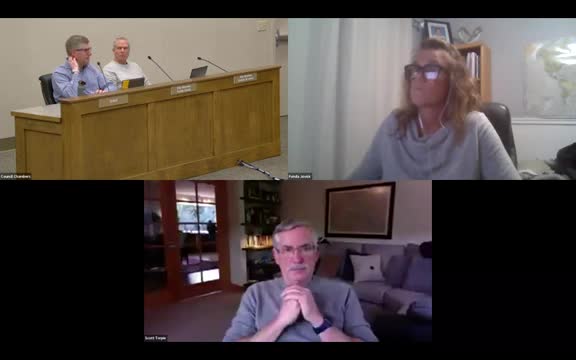Sandpoint leaders affirm no intent to enforce forced annexation in rural Bonner County
March 22, 2025 | Sandpoint, Bonner County, Idaho
This article was created by AI summarizing key points discussed. AI makes mistakes, so for full details and context, please refer to the video of the full meeting. Please report any errors so we can fix them. Report an error »

In a recent Planning and Zoning Commission meeting held in Sandpoint, Idaho, city officials addressed community concerns regarding annexation and urban development. The atmosphere was charged with curiosity as residents sought clarity on how the city plans to manage growth while preserving the rural character of Bonner County.
A key point of discussion was the city's commitment to not increasing density in rural areas without the consent of property owners. This assurance came as a relief to many who fear forced annexation. City representatives explained that any annexation process would involve a detailed plan, public hearings, and notifications to affected property owners, ensuring transparency and community involvement.
The conversation highlighted the importance of the area of impact designation, which allows property owners to initiate annexation with fewer bureaucratic hurdles. This process is designed to encourage cooperation between the city and landowners, fostering a collaborative approach to development.
Concerns about forced annexation were met with reassurances from city officials, who noted that such actions are rare. They emphasized that any annexation would ideally be consensual, driven by landowners seeking city services or wishing to develop their properties. The officials also pointed out that the city’s growth strategy focuses on infill development—utilizing existing infrastructure to accommodate new housing without encroaching on rural landscapes.
The comprehensive plan adopted by Sandpoint outlines a vision for sustainable growth, prioritizing developments like cottage homes and accessory dwelling units (ADUs) within the city limits. This approach aims to balance the demand for housing with the preservation of Bonner County's rural charm.
As the meeting concluded, officials encouraged residents to engage with the comprehensive plan, which serves as a roadmap for Sandpoint's future. The city is poised to embrace growth while remaining committed to protecting the unique character of its surrounding areas, ensuring that the voices of its residents are heard in the process.
A key point of discussion was the city's commitment to not increasing density in rural areas without the consent of property owners. This assurance came as a relief to many who fear forced annexation. City representatives explained that any annexation process would involve a detailed plan, public hearings, and notifications to affected property owners, ensuring transparency and community involvement.
The conversation highlighted the importance of the area of impact designation, which allows property owners to initiate annexation with fewer bureaucratic hurdles. This process is designed to encourage cooperation between the city and landowners, fostering a collaborative approach to development.
Concerns about forced annexation were met with reassurances from city officials, who noted that such actions are rare. They emphasized that any annexation would ideally be consensual, driven by landowners seeking city services or wishing to develop their properties. The officials also pointed out that the city’s growth strategy focuses on infill development—utilizing existing infrastructure to accommodate new housing without encroaching on rural landscapes.
The comprehensive plan adopted by Sandpoint outlines a vision for sustainable growth, prioritizing developments like cottage homes and accessory dwelling units (ADUs) within the city limits. This approach aims to balance the demand for housing with the preservation of Bonner County's rural charm.
As the meeting concluded, officials encouraged residents to engage with the comprehensive plan, which serves as a roadmap for Sandpoint's future. The city is poised to embrace growth while remaining committed to protecting the unique character of its surrounding areas, ensuring that the voices of its residents are heard in the process.
View full meeting
This article is based on a recent meeting—watch the full video and explore the complete transcript for deeper insights into the discussion.
View full meeting